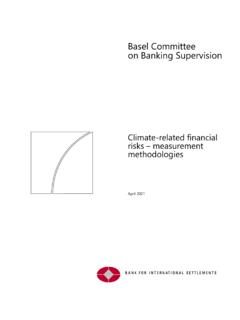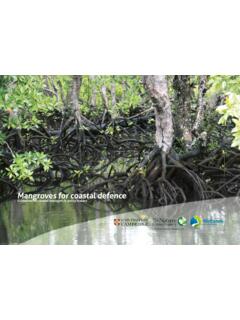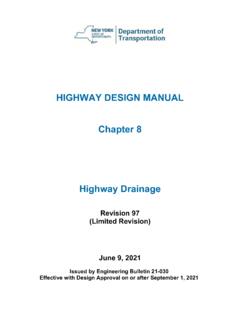Transcription of Homeowner’s Guide to Earthquake Safety - California
1 Homeowner s Guide to Earthquake Safety Before Earthquake 2005 Edition Damage from magnitude Earthquake Published by The California Seismic Safety Commission State of California Arnold Schwarzenegger, Governor SSC No. 05-01 Additional damage from aftershocks This 2005 Edition of the Homeowner s Guide to Earthquake Safety replaces the 2002 Edition on July 1, 2005. Publishing Information The Homeowner s Guide to Earthquake Safety was developed and published by the California Seismic Safety Commission. The Guide was prepared for publication by the staff of The Collaborative for Disaster Mitigation, San Jose State University, One Washington Square, San Jose, CA 95192-0082.
2 It was distributed under the provisions of the Library Distribution Act and Government Code Section 11096. Copyrighted 2005 by the California Seismic Safety Commission All rights reserved Legislation This Guide has been developed and adopted by the California Seismic Safety Commission as required by Assembly Bill 2959, authored by Assemblyman Johan Klehs (Chapter 1499, Statutes of 1990), and Assembly Bill 200, authored by Assemblyman Dominic Cortese (Chapter 699, Statutes of 1991). Ordering Information Copies of this booklet are available from the California Seismic Safety Commission, 1775 Creekside Oaks Drive, Suite 100, Sacramento, CA 95833. To order call (916) 263-5506 or download via our website at On the cover: Taken in Coalinga, California , the pictures of this single family home show the destruction caused by the Coalinga Earthquake on May 2, 1983.
3 The magnitude Earthquake inflicted severe damage to the unreinforced masonry porch, forcing the occupants to evacuate. Numerous aftershocks occurred within the next few days, causing portions of the already weakened structure to collapse. The Homeowner s Guide to Earthquake Safety ii CONTENTS Page Your Home and the Summary of Major California Property Tax and Examples of Damage to Single Family Earthquake MAPS OF Damaging Earthquakes in Major Earthquake Faults in Simplified Earthquake Shaking Potential Map for ADDITIONAL Earthquake Unbraced Water Home Not Anchored to Weak Cripple Pier and Post Unreinforced Masonry Homes Built on Steep Unreinforced Masonry Rooms over Page OTHER Earthquake -RELATED Unreinforced Masonry Homes with Unique NATURAL GAS GETTING THE WORK GEOLOGIC WHAT TO DO DURING AN WHAT TO DO BEFORE AN
4 WHAT TO DO AFTER AN RESOURCE RESIDENTIAL Earthquake hazards SAMPLE TAX EXCLUSION The Homeowner s Guide to Earthquake Safety iii ACKNOWLEDGMENTS Seismic Safety Commission Lucille M. Jones, , Chair, Seismology Hon. Richard Alarcon, State Senate (Chris Modrzejewski) Hon. Carol Liu, State Assembly (Donald Manning) Lawrence T. Klein, Utilities Mark Church, Local Government Linden Nishinaga, , City Government Celestine Palmer, Insurance Andrew A. Adelman, , Cities/Building Official Stan Moy, , Architecture and Planning Daniel Shapiro, , Structural Engineering Vacant, Mechanical Engineering Bruce R. Clark, , Geology Vacant, County Government Vacant, Emergency Services Donald R.
5 Parker, Vice Chairman, Fire Protection Jimmie R. Yee, Social Services Vacant, Soils Engineering Seismic Safety Commission Staff Richard McCarthy, Executive Director Robert Anderson Karen Cogan Henry Reyes Henry Sepulveda Fred Turner, Project Coordinator Sue Celli Rebecca Romo Collaborative for Disaster Mitigation Staff Guna Selvaduray, , Executive Director Patrick Chong, Webmaster Crystal Carrera, Administrative Assistant The Commission gratefully acknowledges the assistance of the following: American Red Cross American Society of Home Inspectors Association of Bay Area Governments Building Education Center California Association of Realtors California Building Officials California Council of the American Institute of Architects California Geological Survey California Real Estate Inspection Association California Governor s Office of Emergency Services City of Los Angeles Earthquake Engineering Research Institute Humboldt Earthquake Education Center International Code Council SBC San Diego Association of Governments Southern California Association of Governments Southern California Association of Residential Retrofit Professions Southern
6 California Gas Company/Sempra Structural Engineers Association of California Committee on Earthquake Safety Issues for Gas Systems Disclaimer: The effects, descriptions, recommendations, and suggestions included in this document are intended to improve Earthquake preparedness; however, they do not guarantee the Safety of an individual or a structure. The Seismic Safety Commission takes responsibility for the inclusion of material in this document. The State of California , the Seismic Safety Commission, and all contributors to this document do not assume liability for any injury, death, property damage, loss of revenue, or any other effect of an Earthquake . The Homeowner s Guide to Earthquake Safety iv INTRODUCTION Earthquakes, especially major ones, are dangerous, inevitable, and a fact of life in California .
7 Sooner or later another big one will occur. Earthquakes: Occur without warning Can be deadly and extremely destructive Can occur at any time As a current or potential owner of a home*, you should be very concerned about the potential danger to not only yourselves and your loved ones, but also to your property. The major threats posed by earthquakes are bodily injuries and property damage, which can be considerable and even catastrophic. Most of the property damage caused by earthquakes ends up being handled and paid for by the homeowner. Earthquakes have caused over $55 billion in losses in California since 1971. Large earthquakes in or near major urban centers in California will disrupt the local economy and can disrupt the economy of the entire State.
8 However, proper Earthquake preparation of your home can: Save lives Reduce injuries Reduce property damage As a homeowner, you can significantly reduce damage to your home by fixing a number of known and common weaknesses. This Booklet is designed to assist you in filling out the Residential Earthquake hazards Report (See page 47) when you sell your home. This booklet is also a good start to begin strengthening your home against Earthquake damage. It describes: Common weaknesses that can result in your home being damaged by earthquakes, and Steps you can take to correct these weaknesses. There are no guarantees of Safety during earthquakes, but properly constructed and strengthened homes are far less likely to collapse or be damaged during earthquakes.
9 The California Seismic Safety Commission advises you to act on the suggestions outlined in this booklet and make yourself, your family, and your home safer. *For the purpose of this document, home includes single family residences, duplexes, triplexes, and fourplexes. The Homeowner s Guide to Earthquake Safety 1 YOUR HOME AND THE LAW California State Law requires the seller to: Inform the buyer about known home weaknesses (See Earthquake Weaknesses, beginning on page 11). Strap the water heater, reducing the chance of it falling during an Earthquake and possibly causing gas and water lines to break. Deliver a copy of this booklet to the buyer if the home was built before 1960 (Your real estate agent is required to give the seller a copy of this booklet).
10 Deliver to buyers a Natural hazards Disclosure form (See page 4). The disclosure will tell buyers whether the home is in an Earthquake Fault Zone or in a Seismic Hazard Zone (See page 38) Complete the Residential Earthquake hazards Report, to be provided to the buyer (See page 47). California State Law does not require the seller to: Hire someone to evaluate your home. Strengthen your home before selling it. This Booklet: Describes the most common weaknesses that can cause damage to homes, in the event of an Earthquake . Enables the seller to meet the State Law requiring this booklet be given to every buyer of homes built before 1960. Enables the seller to disclose to the buyer the typical Earthquake weaknesses in homes built before 1960.






